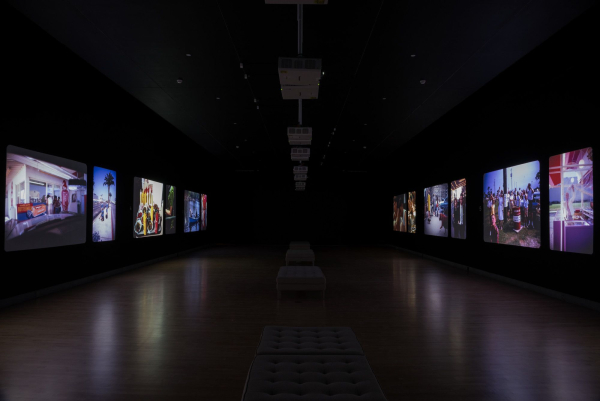Debuting in New York, David Zwirner brings Tijuanatanjierchandelier, the exhibition by American artist Jason Rhoades to the city. Upon entering the room, visitors are inundated by bright, glowing, neon lights tangled and hanging by wires above blankets, hides, and small knick knacks.
The exhibition comes across as not several works of art hanging in one room, rather a singular experience contained in one large room. True, a viewer can take works in a small bit at a time such as the neon phrases, frankensteined light fixtures, or small collections of objects, but where one work begins and another ends is nearly imperceptible. He sets the space up like a marketplace with rugs laid out on the floor topped with pots, ornaments, souvenirs, and the like; objects one could expect to find in both the titular cities of Tijuana and Tangier. However, Rhoades changes the intent of the marketplace, originally meant to buy and sell handmade goods often unique to the culture, country or person, and hangs above them slang words for vagina.
Rhoades plays with language, hanging neon translations and colloquial terms and euphemisms for vagina to provoke and discomfort the viewer. His use of neon with the slag invokes the feeling of an environment similar to a sex district rather than a typical marketplace, even with lamps, ornaments, foods, and other crafts lay on the floor as if being sold. With this exhibit he seems to evoke the sale of exotic "stench trench" as a marketable good on the same level of objectness as a craft one might buy as a souvenir.
Rhoades seems to embody with this exhibit the exotification of sex workers white male tourists project on to different cultures during travel. One can not only buy crafts and artwork, but sex workers as well. He takes away a level of humanness by reducing sex workers only to the slang terms for vagina, which are often not said with respect and reduces them to the same commodification as a souvenir.




















